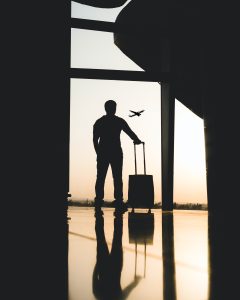66 First Person: Tips For Traveling when You Have Bipolar Disorder
BY JODI LEE

Traveling can be difficult for everyone, even more so for those that struggle with mental health conditions. Between packing, leaving your normal schedule, the crowds and hustle at the airport, the time change (when applicable), and the complete routine change, it’s no wonder why traveling can be so stressful.
The first part of traveling is packing. I start about a week before I leave by making a list of everything that I need to pack and a list of everything that I need to do before leaving. My packing list includes all clothes, shoes, and toiletries that I may need while I’m away. Of course, I almost always over-pack, but I think that it’s better to have something and not need it, than need it and not have it. I cross off every item as I pack it. Using this method, I have never forgotten anything that I planned on bringing.
My anxiety usually increases when my schedule changes. My normal routine is something that helps keep my anxiety low and helps keep my moods stable. I try to get everything done prior to leaving that I would usually do during the time that I’m away. I have a family member or friend stay at my house to take care of my dog and my home. It’s easier to do that than board my dog at a vet’s office; plus, it makes my dog a lot happier. Knowing that someone I trust is taking care of my house makes me feel more at ease. I tend to worry about everything while I’m away, especially the things that I have no control over.
When I have some extra time while in the airport, I find an empty terminal so I can sit by myself and calm down before having to board the plane.
I use anxiety medication to help me at the airport. It keeps me calm, which is very important. I get nervous around crowds, especially when there are people behind me. I also wear a backpack, which keeps some space between me and the person behind me when I’m in a line. I get to the airport about 1 ½ hours early so that I’m not in a rush. When I have some extra time while in the airport, I find an empty terminal so I can sit by myself and calm down before having to board the plane. If my anxiety is too high, I call someone that I can talk to that can help me relax a little.
Dealing with a time change can be tough. When I travel, I usually deal with a two or three hour time change. For me, the best way to handle the time change is to make sure I get enough sleep before traveling and once I arrive at my destination. It’s important to sleep enough on the actual day of travel, but not to oversleep. It takes time for your body to adjust, don’t push yourself beyond what you’re physically and mentally capable of.
Since a change in routine can be strenuous, I try to make a plan for the time while I’m away. I make a list of the people I want to visit and any of the activities I want to do. I try to figure out what to do and when; I basically come up with a routine for the time that I’m away. I don’t follow the new schedule perfectly like I normally would with my regular routine. It’s more of a prospective routine that helps me stay organized while I’m away.
Hopefully, these techniques will help you travel in a more comfortable and relaxed manner. It’s basically about being organized and listening to your body. The following suggestions help me to make the best of traveling:
- Make a complete packing list. Start about one week before traveling so you don’t forget anything.
- Have someone stay at your house (or visit every few days) to take care of everything.
- Get to the airport early so you’re not rushed.
- Use anti-anxiety medication when necessary.
- Keep space between you and others at the airport as much as possible; wear a backpack.
- Find a quiet place, an empty terminal, in the airport to relax before your flight.
- Remember to sleep enough, but not too much.
- Make a schedule for the time while you are away so that you can have some type of a routine.